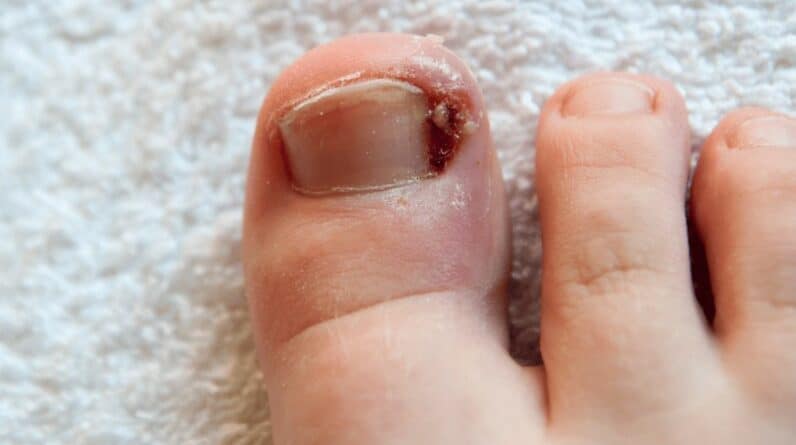Introduction
Welcome to our blog! In today’s article, we will delve into the intriguing topic of can you have sleep apnea without snoring? and the correlation between sleep apnea and snoring. You’re in the right place if you are over 50 and curious about how sleep disorders could affect your health. We will explore the various aspects of sleep apnea, its symptoms, diagnosis, and treatment options.

Dementia Discovery That is Leaving Doctors Speechless (Try This Tonight)
Better than Morphine For Joint Pain… Yet Safer Than Aspirin?
Retire With Freedom. Start Earning Extra Cash Today.
What is Sleep Apnea?
Understanding Sleep Apnea

Sleep apnea is a sleep disorder characterized by pauses in breathing or instances of shallow or infrequent breathing during sleep. These pauses can last from a few seconds to minutes and may occur many times an hour. The three primary types of sleep apnea are obstructive, central, and complex sleep apnea syndrome.
However, obstructive sleep apnea is the most common type and occurs when the throat muscles intermittently relax and block the airway during sleep, leading to reduced airflow (hypopnea) or complete airflow cessation (apnea).
Types of Sleep Apnea
There are three main types of sleep apnea: obstructive sleep apnea (OSA), central sleep apnea (CSA), and complex sleep apnea syndrome (treatment-emergent central sleep apnea). OSA is the most prevalent type and is characterized by repetitive episodes of complete or partial upper airway obstruction during sleep.
CSA involves the central nervous system and is distinguished by the brain’s failure to transmit signals to the muscles that control breathing. Complex sleep apnea syndrome, also known as treatment-emergent central sleep apnea, occurs when an individual exhibits obstructive and central sleep apnea patterns.
Connection Between Sleep Apnea and Snoring
Myth: All Sleep Apnea Patients Snore
Myth: All Sleep Apnea Patients Snore
- It is a common misconception that all individuals with sleep apnea snore
- However, this is not entirely accurate. While snoring is a frequent symptom of sleep apnea, not all individuals who suffer from sleep apnea snore.
- In some cases, individuals with sleep apnea may experience other symptoms without exhibiting snoring.
- This indicates that the absence of snoring does not necessarily rule out the possibility of sleep apnea.
While snoring is a common symptom associated with sleep apnea, it is essential to note that not all individuals with sleep apnea experience snoring. In fact, various manifestations and indicators of sleep apnea can present differently from person to person. These include:
- Gasping for air during sleep
- Choking sensations during sleep
- Daytime sleepiness and fatigue
- Mood disturbances, such as irritability and depression
- Difficulty concentrating and memory problems
Furthermore, recent research has revealed that individuals with sleep apnea, particularly those with central sleep apnea, may not exhibit snoring. This highlights the complexity of sleep apnea and emphasizes the importance of considering a range of symptoms when diagnosing the condition.
Research Studies and Findings
Research studies have highlighted the intricate relationship between sleep apnea and snoring. These studies have demonstrated that snoring is often associated with obstructive sleep apnea (OSA) and can indicate the disorder.
However, it is essential to recognize that not all instances of snoring indicate sleep apnea, as snoring can occur due to various factors unrelated to sleep apnea. These findings emphasize the need for a comprehensive evaluation to diagnose sleep apnea accurately.
Symptoms of Sleep Apnea Without Snoring
Common Symptoms to Look Out For
Can You Have Sleep Apnea Without Snoring? – Common Symptoms to Look Out For
- Excessive Daytime Sleepiness: Individuals with sleep apnea may experience excessive daytime sleepiness, often leading to drowsiness and difficulty staying awake during the day. This can significantly impact daily activities and productivity.
- Difficulty Concentrating: Cognitive function can be affected by sleep apnea, resulting in difficulty concentrating, memory problems, and impaired decision-making abilities.
- Morning Headaches: Waking up with frequent headaches can be a common symptom of sleep apnea. These headaches are usually described as mild to moderate tension-type headaches and can contribute to morning grogginess.
- Irritability: Sleep apnea, which disrupts sleep patterns and reduces the quality of rest, can lead to irritability, mood swings, and changes in emotional stability.
- Restless Sleep: Many individuals with sleep apnea experience disturbed sleep, often tossing and turning throughout the night, leading to unrefreshed sleep.
In addition to these daytime symptoms, individuals may also encounter nocturnal symptoms that are indicative of sleep apnea:
- Gasping for Air: Gasping for air during sleep, often accompanied by choking sensations, can be a frightening experience and is common among individuals with sleep apnea.
- Choking Sensations: Sensations of choking or struggling to breathe during sleep concern sleep apnea symptoms that may prompt individuals to seek medical evaluation.
- Frequent Awakenings: Sleep apnea is characterized by waking up multiple times during the night due to interrupted breathing patterns, which can lead to fragmented, poor-quality sleep.
Differences in Symptoms Without Snoring
The absence of snoring does not diminish the significance of other symptoms that may indicate the presence of sleep apnea. In the absence of snoring, individuals should pay close attention to symptoms such as fragmented sleep, recurrent night sweats, and persistent fatigue despite sufficient sleep duration.
Furthermore, fluctuations in mood and cognitive function can also indicate sleep apnea, necessitating thorough assessment and diagnosis.
Diagnosis and Testing
Sleep Studies and Assessments
The diagnosis of sleep apnea involves undergoing a comprehensive sleep study, also known as polysomnography, to evaluate various aspects of sleep and breathing patterns. This study entails monitoring vital signs, brain activity, muscle movements, and breathing functions during sleep.
Additionally, home sleep apnea testing may be conducted for individuals suspected of having sleep apnea, enabling comfortable and convenient monitoring of breathing patterns at home.
- Polysomnography: This diagnostic test involves recording various parameters during sleep, including brain waves, muscle activity, heart rate, and breathing patterns.
- Vital Signs Monitoring: The sleep study monitors vital signs such as blood pressure, heart rate, and oxygen levels.
- Respiratory Monitoring: Assessment of breathing patterns and respiratory efforts during sleep is a crucial component of the sleep study for diagnosing sleep apnea.
Diagnostic Criteria for Sleep Apnea
Diagnostic criteria for sleep apnea encompass an assessment of symptoms, medical history, physical examination, and the results of sleep studies. The Epworth Sleepiness Scale, which measures the likelihood of falling asleep in various situations, is often used to evaluate excessive daytime sleepiness, a common symptom of sleep apnea.
Furthermore, healthcare providers may utilize the Apnea-Hypopnea Index (AHI) to quantify the severity of sleep apnea based on the frequency of apneas and hypopneas per hour of sleep.
Assessment of Symptoms:
- – Chronic and loud snoring
- – Gasping or choking during sleep
- – Daytime sleepiness and fatigue
Medical History:
- – Family history of sleep apnea
- – Presence of other medical conditions (e.g., obesity, hypertension)
- – Use of medications that affect breathing
Physical Examination:
- – Examination of the airway and throat for obstructions
- – Assessment of body mass index (BMI) and neck circumference
Sleep Studies and Assessments:
- – Polysomnography (overnight sleep study)
- – Home sleep apnea testing (HSAT)
- Apnea-Hypopnea Index (AHI):
– Classification of severity based on AHI scores:
- – Mild: 5-15 events per hour
- – Moderate: 15-30 events per hour
- – Severe: >30 events per hour
Risk Factors for Sleep Apnea
Weight and Sleep Apnea
Excess weight and obesity are significant risk factors for the development and exacerbation of sleep apnea. The accumulation of fatty tissues around the upper airway can impede airflow and lead to airway obstruction during sleep.
Moreover, individuals with obesity often exhibit altered respiratory function, which contributes to the increased prevalence of sleep apnea among this population.
- Impact of weight on sleep apnea
- Obesity-related structural changes in the airway
- Altered respiratory function in individuals with obesity
Family History and Genetic Predisposition
Family history and genetic predisposition are crucial in susceptibility to sleep apnea.
Sleep apnea in close family members, particularly parents and siblings, increases the likelihood of an individual developing the disorder. Genetic factors can influence an individual’s airway structure, respiratory control, and predisposition to conditions that contribute to the onset of sleep apnea.
Health Implications of Undiagnosed Sleep Apnea
Impact on Cardiovascular Health
Undiagnosed and untreated sleep apnea can have a profound impact on cardiovascular health. The effects of sleep apnea on the cardiovascular system are multifaceted and can lead to serious complications. Here are some key implications of untreated sleep apnea on cardiovascular health:
- Oxygen Desaturation: The intermittent reduction or cessation of airflow during sleep results in decreased oxygen levels in the blood, putting a strain on the heart and increasing the risk of cardiovascular events.
- Increased Blood Pressure: Sleep apnea can elevate blood pressure levels, which, if left unmanaged, can contribute to the development of hypertension and other cardiovascular conditions.
- Coronary Artery Disease: Chronic sleep apnea is associated with an increased risk of developing coronary artery disease, which can lead to serious heart-related complications.
- Heart Failure: The added strain on the heart due to oxygen desaturation and increased blood pressure can lead to the progressive weakening of the heart muscle and eventual heart failure.
- Stroke Risk: Individuals with sleep apnea are at a higher risk of experiencing a stroke due to the impact of breathing disruptions on the cardiovascular system.
It is crucial to recognize the far-reaching effects of sleep apnea on cardiovascular health and its significant implications for overall well-being. Early diagnosis and appropriate treatment are essential in mitigating the adverse cardiovascular outcomes associated with sleep apnea.
Cognitive and Emotional Effects
Undiagnosed sleep apnea can have profound cognitive and emotional effects on an individual, impacting various aspects of daily life. The cognitive implications of untreated sleep apnea are wide-ranging, leading to impaired cognitive function, reduced alertness, and diminished daytime performance.
Furthermore, the emotional effects can manifest as mood disturbances, increased irritability, and a lower overall quality of life.
- Impaired cognitive function, including difficulties with memory retention and recall, as well as trouble concentrating on tasks
- Reduced alertness and daytime sleepiness, affecting the ability to remain attentive and focused throughout the day
- Diminished cognitive performance, leading to challenges in problem-solving and decision-making
- Mood disturbances, including increased irritability and decreased tolerance for stress
- Lowered quality of life, impacting an individual’s overall well-being and satisfaction with daily activities
Moreover, the disruption of sleep architecture caused by sleep apnea can contribute to the development of mood disorders, such as anxiety and depression, further exacerbating the overall burden of untreated sleep apnea.
Treatment Options
Continuous Positive Airway Pressure (CPAP) Therapy
Continuous Positive Airway Pressure (CPAP) therapy is a widely utilized treatment modality for sleep apnea. It involves the use of a CPAP device to deliver pressurized air to the airway, preventing its collapse during sleep. The CPAP machine consists of a mask that fits over the nose and mouth, and it’s connected to a motor that blows air into the mask.
This constant airflow facilitates unobstructed breathing and alleviates sleep apnea symptoms, such as loud snoring and daytime sleepiness. Additionally, CPAP therapy can help reduce the risk of complications associated with sleep apnea, such as high blood pressure and cardiovascular problems.
- CPAP therapy is known to improve sleep quality for individuals with sleep apnea significantly.
- It can prevent the dangerous pauses in breathing that occur during sleep, reducing the strain on the heart and improving overall health.
- One of the key benefits of CPAP therapy is its ability to enhance daytime alertness and cognitive function, leading to improved daily functioning and productivity.
Alternative Treatments and Therapies
In addition to CPAP therapy, various alternative treatments and therapies are available for individuals with sleep apnea. These options provide additional choices for patients who may not find CPAP therapy suitable or practical or prefer non-invasive treatments. The following alternative medicines and therapies may be considered:
- Oral Appliance Therapy involves wearing a device in the mouth during sleep to help keep the airway open. It is a common and effective alternative to CPAP for individuals with mild to moderate sleep apnea.
- Positional Therapy: Some individuals experience frequent airway obstructions when sleeping in certain positions. Positional therapy involves devices or techniques to encourage sleeping in positions that minimize airway obstruction and reduce apnea events.
- Lifestyle Modifications: Lifestyle changes, such as weight management and positional techniques during sleep, can positively impact sleep apnea symptoms. Weight loss and positional adjustments can help reduce the severity of apnea events, especially when combined with other treatments.
In addition to these non-invasive treatments, surgical interventions may be considered in specific cases to address anatomical factors contributing to airway obstruction. However, these interventions are typically reserved for cases where other treatments have been ineffective or unsuitable.
Conclusion
As we conclude our exploration of sleep apnea and its related characteristics, it is evident that this sleep disorder encompasses diverse manifestations and implications.
Recognizing the relationship between sleep apnea and snoring, understanding the symptoms, diagnosis, and risk factors, and exploring the multifaceted impact on health underscore the significance of addressing sleep apnea comprehensively.
We promote awareness, early detection, and effective management to empower individuals to prioritize their sleep health and well-being.
Disclaimer: The information in this article is intended for educational and entertainment purposes only and should not be used instead of or contrary to that of a medical professional. Please consult a medical or nutritional professional before taking supplements, starting a new diet, or starting a new exercise regime. The owners of “Getting Healthy After 50” are not medical professionals and simply redistributing information freely available online.






